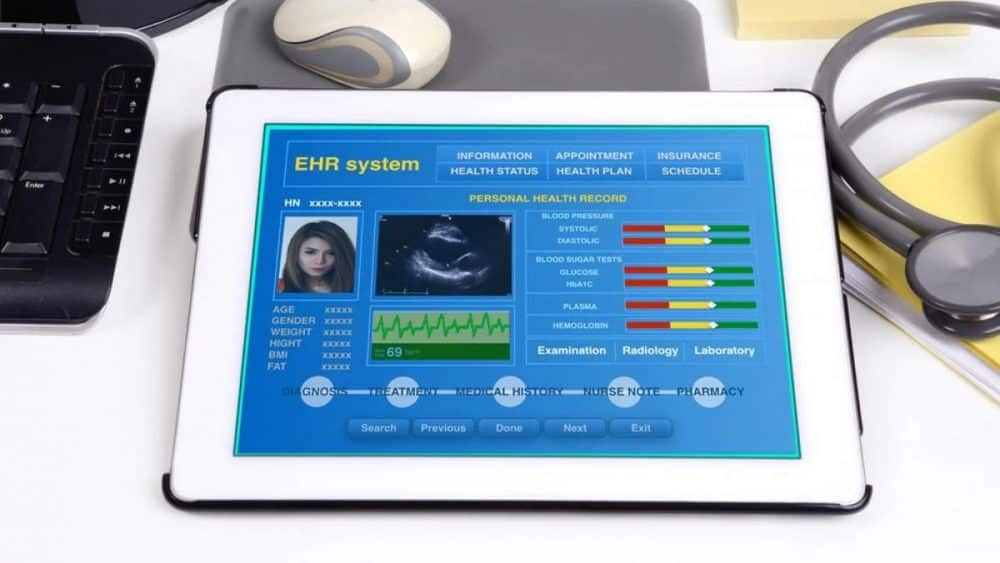Electronic Health Records
Scaling up the SRH and HIV/AIDS awareness campaign project through Electronic Health Records and database management targeting adolescence girls and boys and people living with HIV/AIDS.

What are electronic health records?
Electronic health records (EHRs) are any digital document or system that contains information on an individual’s health and care. This could be online, on an internal network, or on a device.
There are a number of well-recognised examples. These range from simple electronic diaries to complicated systems spanning multiple healthcare providers and sectors.
Why are electronic health records important?
In 2020, Africa Health Organisation (AHO) set a target of being paper-free by 2030 in Africa. In the more recent AHO Business Plan, this was updated to an expectation that all services in Africa should have met ‘a level of core digitalisation by 2030’. The move to EHRs underpins most of this.
As a result of that directive, many hospitals, trusts and organisations have requested AHO to help them switch to EHRs. There are a number of global digital exemplar sites around Africa that have implemented such systems and are providing a blueprint for other services.
Almost all students and newly qualified doctors will encounter EHRs on their placements, rotations and first jobs. Established clinicians still using paper notes are likely to face a change to EHRs in the near future. The known benefits are that they save time and result in fewer errors.
EHRs offer significant benefits to the private sector, too. Well-designed EHRs will take care of:
- Record management.
- Security.
- Compliance with the General Data Protection Regulation (GDPR).
Putting the patient at the centre of this is essential. Having all a patient’s notes to hand during an appointment improves care.
Ideally, records are shared between professionals, something that can be approved at a local level in the case of some record-sharing agreements. This saves the patient from having to recall their medical history, medication and other recorded information as clinicians are already able to access it. Overall, this improves the patient experience and communication between clinicians.
A benefit of EHRs is that they are highly customisable. This can improve the quality and speed of recording notes. Medical drawings and photography can be included, in addition to numeric and written notes. Information can also be coded against known standards to gain insight into service provision, to design and evaluate change, and to understand population health data.
Examples of electronic health records
In Makonde district in Zimbabwe, AHO is working with partners to make sure that all hospitals, clinics, health centres and GP surgeries use SystmOne by TPP. This is also used by the community rehabilitation and nursing services, the musculoskeletal physiotherapy team, out-of-hours doctors, podiatrists, the community pain management service and the fracture liaison service.
Data is also pulled in from local hospitals using a health-information exchange, and hospital clinicians are able to view information from SystmOne. A wide-reaching local data-sharing agreement covers all these services, in addition to local authorities and social care providers, to enable easy communication.
In practice, this means that when a patient attends the outpatient clinic, the clinician is able to view all their medical history and medications, previous episodes of care regardless of which service provided that care, and all communications between services.
This has helped to identify conditions such as spondyloarthropathies and degenerative neurological disorders, which patients may have failed to identify to their clinicians even with questioning and prompting. For example, if a patient has 30 years of medical conditions to remember, and is sitting in a clinic with back pain, it may not occur to them to mention that they have had uveitis.

AHO Electronic Health Records Project in Makonde district in Zimbabwe
Short project description
AHO intends to scale up its project of supporting SRH to the people in Makonde district specifically adolescence girls and boys and people living with HIV/AIDS. AHO has been recording beneficiary data and keeping their data in simple Microsoft applications. After data has been kept there was no coordination between the service providers and beneficiary or patient.
Currently AHO is scaling up by transforming data from excel sheets and word document to digital EHRs software that has the ability to exchange health information electronically and provide higher quality and safer care for patients through:
- Providing accurate, up-to-date, and complete information about patients at the point of care
- Enabling quick access to patient records for more coordinated, efficient care
- Securely sharing electronic informationwith patients and other clinicians
- Helping providers more effectively diagnose patients, reduce medical errors, and provide safer care
- Improving patient and provider interaction and communication, as well as health care convenience
- Enabling safer, more reliable prescribing
- Helping promote legible, complete documentationand accurate, streamlined coding and billing
- Enhancing privacy and securityof patient data
- Helping providers improve productivityand work-life balance
- Enabling providers to improve efficiency and meet their business goals
- Reducing coststhrough decreased paperwork, improved safety, reduced duplication of testing, and improved health.
Period: 3 years
Budget: $1.5 million dollars
Partners:
Partners are from different backgrounds and countries:
Uiversity of Zimbabwe, AFRIAIDS, President’s office, central government, Ministry of Health, Ministry of Labour and welfare
International partners from countries such as Brazil, Russia, India, China and South Africa (BRICS)
Main Outcomes
Short-term outcomes
- Improved Patient Care.
- Increased Patient Participation.
- Ensured privacy and security for personal health information.
Long-term outcomes
- Better health care by improving all aspects of patient care, including safety, effectiveness, patient-centeredness, communication, education, timeliness, efficiency, and equity.
- Better health by encouraging healthier lifestyles in the entire population, including increased physical activity, better nutrition support, avoidance of behavioural risks, and wider use of preventative care.
- Improved efficiencies and lower health care costs by promoting preventative medicine and improved coordination of health care services, as well as by reducing waste and redundant tests.
- Better clinical decision making by integrating patient information from multiple sources
Project Contact
Name: Simbarashe Sande Chifeya
Title: AHO Country Director
E-mail address: simbarashe.chifeya@aho.org
Phone number: +263 78 529 5580
Postal address: 6th Floor Batanai Gardens, 57 Jason Moyo Avenue, Harare Zimbabwe.

